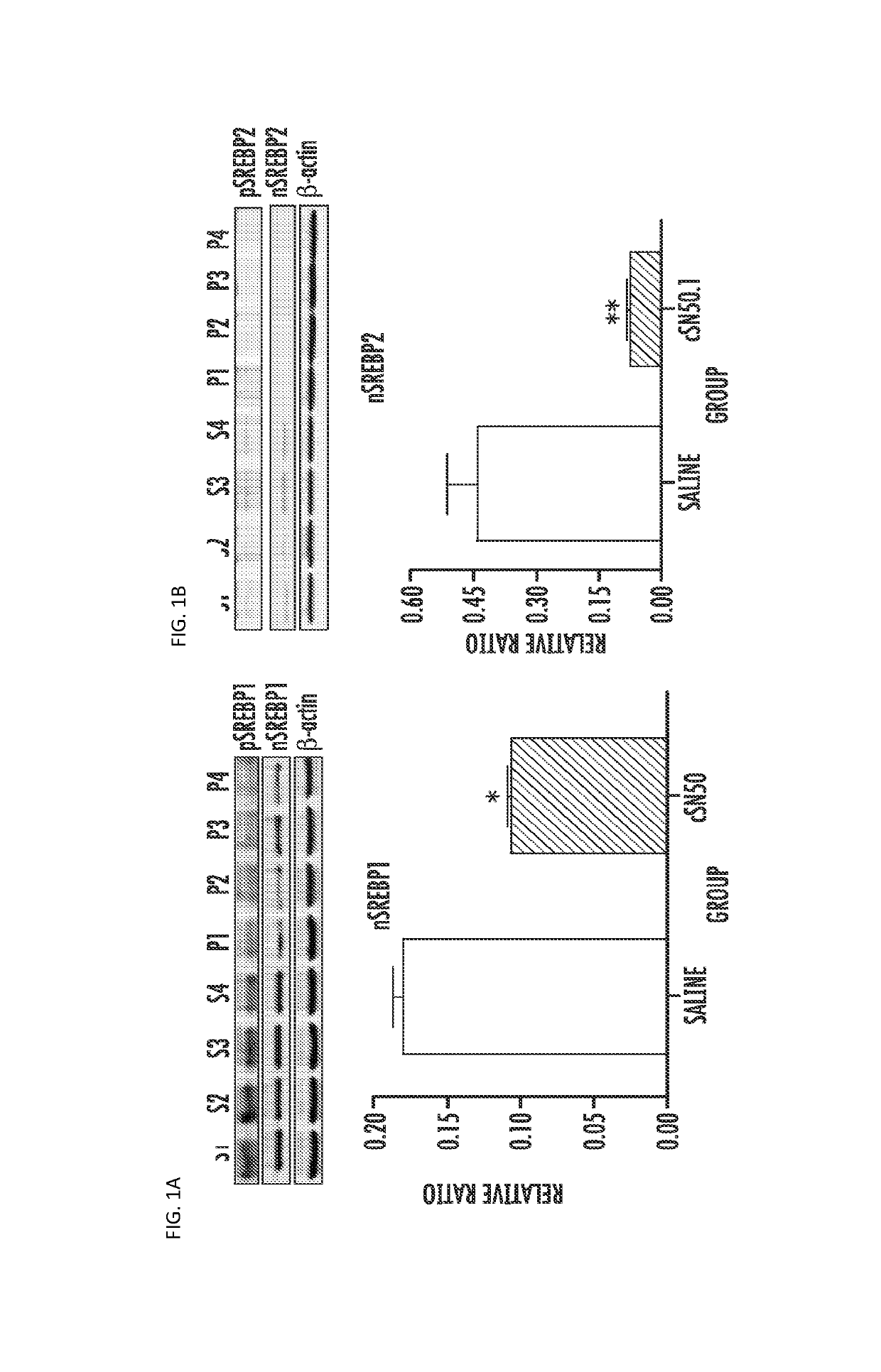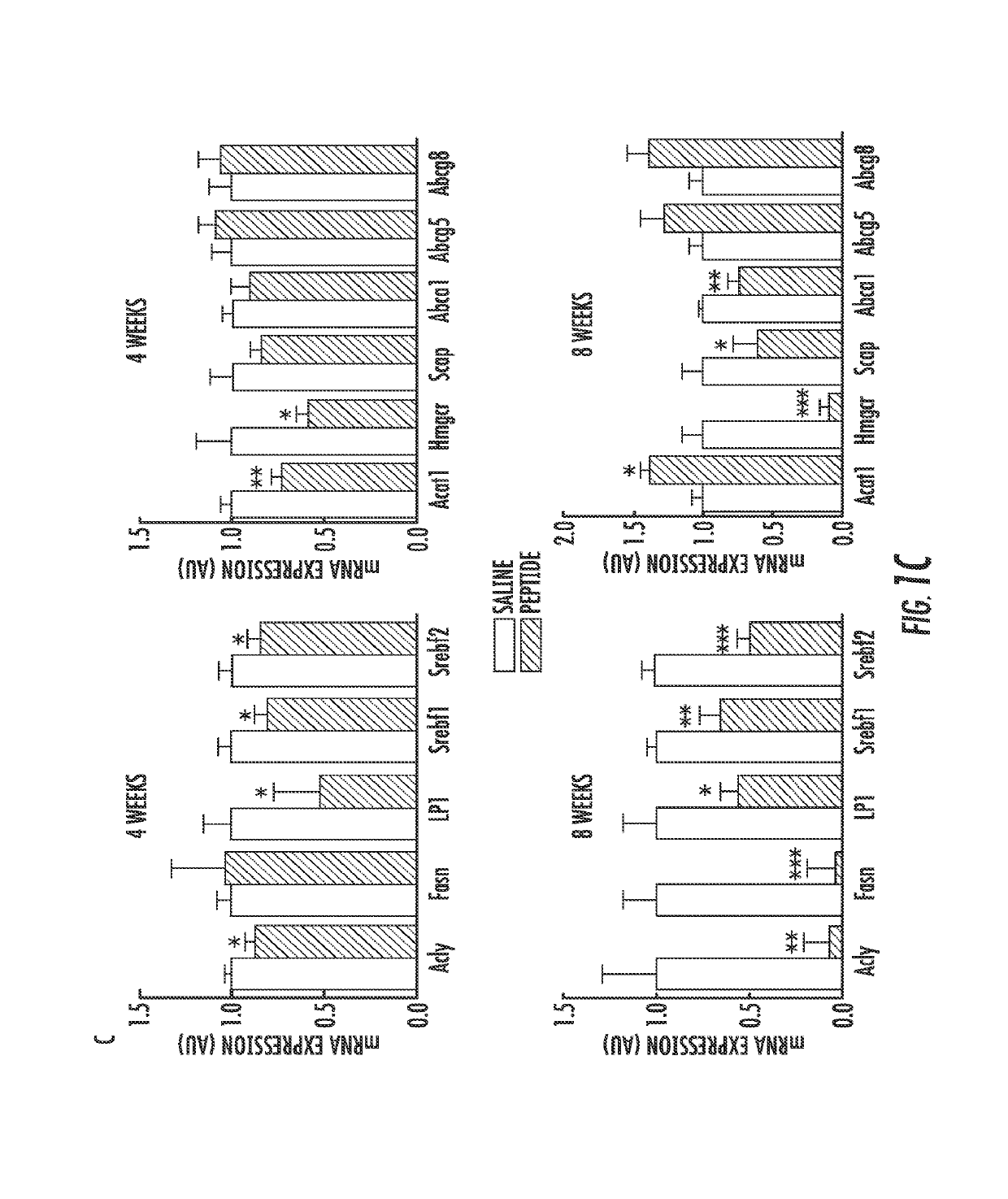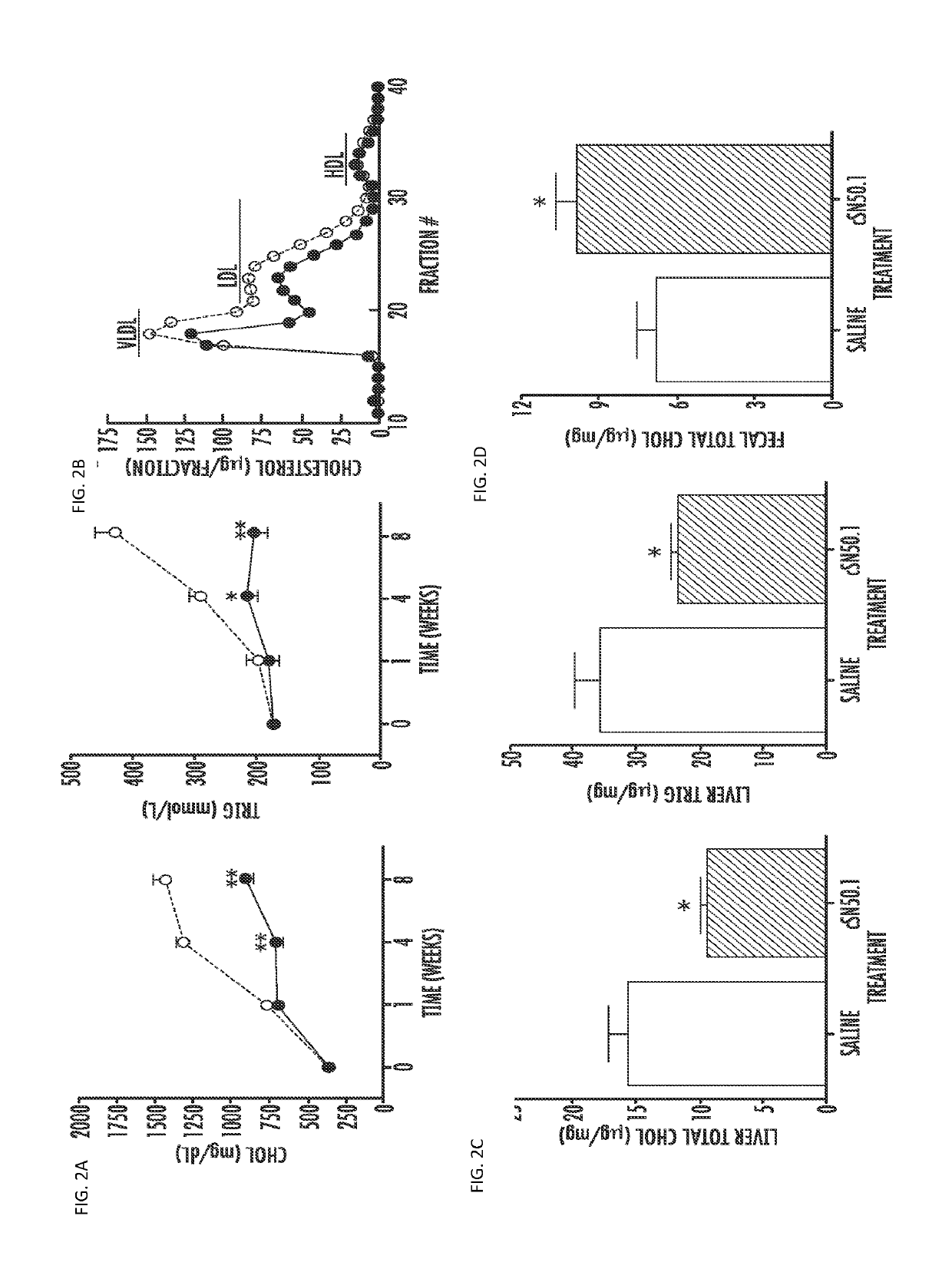Compositions and methods for treating and preventing hyperlipidemia, fatty liver, atherosclerosis and other disorders associated with metabolic syndrome
a technology of metabolic syndrome and composition, applied in the field of metabolic syndrome, can solve the problems of contributing to metabolic syndrome, a leading cause of mortality worldwide, and achieve the effect of reducing the level of cholesterol or triglycerides
- Summary
- Abstract
- Description
- Claims
- Application Information
AI Technical Summary
Benefits of technology
Problems solved by technology
Method used
Image
Examples
example 1
Nuclear Transport in Hypercholesterolemia
[0064]Hyperlipidemia, fatty liver, and atherosclerosis contribute to cardiovascular and hepatobiliary morbidity and mortality worldwide. Previous studies have shown that genetic ablation of the transcription factor sterol response element-binding protein (SREBP) 1 in LDL receptor-deficient (ldlr− / −) mice fed a Western diet high in cholesterol and fats prevents hyperlipidemia and atherosclerosis though liver steatosis remains unabated (Karasawa, T., et al., (2011) Arterioscler Thromb Vasc Biol 31, 1788-1795). We developed a cell-penetrating NTM that binds importin beta, the nuclear transporter for SREBPs, to inhibit their nuclear translocation, thereby reducing SREBPs-dependent transactivation of multiple genes controlling cholesterol, triglyceride, and fatty acid synthesis including 3-hydroxy-3-methylglutaryl-coenzyme A (HMG-CoA) reductase, the rate controlling enzyme in cholesterol synthesis, and Niemann-Pick C1-like1 (NPC1L1) protein, a key...
PUM
| Property | Measurement | Unit |
|---|---|---|
| pH | aaaaa | aaaaa |
| solubility | aaaaa | aaaaa |
| time | aaaaa | aaaaa |
Abstract
Description
Claims
Application Information
 Login to View More
Login to View More - R&D
- Intellectual Property
- Life Sciences
- Materials
- Tech Scout
- Unparalleled Data Quality
- Higher Quality Content
- 60% Fewer Hallucinations
Browse by: Latest US Patents, China's latest patents, Technical Efficacy Thesaurus, Application Domain, Technology Topic, Popular Technical Reports.
© 2025 PatSnap. All rights reserved.Legal|Privacy policy|Modern Slavery Act Transparency Statement|Sitemap|About US| Contact US: help@patsnap.com



